10Nights / 11Days
Islaabad-Taxila-Peshawar-Takht-E-Bhai-Swat-Besham-Gilgit-Karimabad-Gulmit-Sust
TOUR ITINERARY:
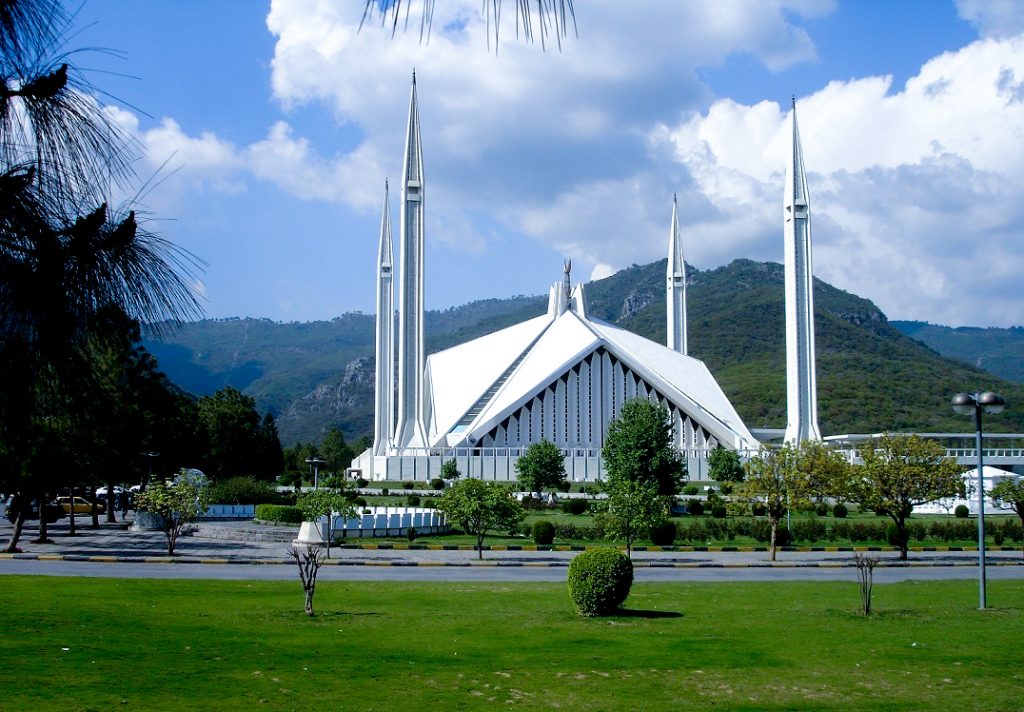
Day 01: Islamabad Arrival
Upon arrival at Islamabad International Airport. Meet, assist and transfer to the hotel.
Lunch at the hotel.
PM. Sightseeing tour will start from, Faisal Mosque, Shakar Parian & National monument with a trip to Damn-e-Koh, to catch an eye bird view of the twin cities.
Dinner & overnight in Islamabad. (Lunch & Dinner).
Day 02: Islamabad-Taxila-Peshawar
Breakfast at the hotel. Drive to Peshawar.
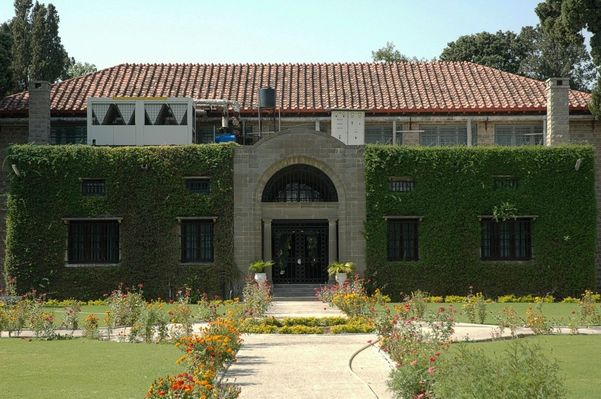
Taxila is 40 kms away from Islamabad the capital city of Pakistan, was once the seat of Oriental civilization. In 6th century B.C, It was first talked about as a satrapy of the Archemenian Empire. It was attacked by Alexander the Great (Sikandar-e-Azam) & passed along to other monarch until finally he reached the hands of Ashoka, who give the shape of the city into a learning and cultural centre. The original Gandhara era pursued in a while. After that Taxila remained the centre of learning, thinking and sculptures. It came to a devastating and deplorable closing stage when sacked by White Huns. Today, here is a well-maintained museum & eight sites sprinkled in the region of a very short radius. Amongst the best conserved are Sirkap, Jaulian (the University) and Mohra Moradu. Arrive and transfer to the hotel.
En-route lunch at local restaurant in Taxila. Continue traveling to Peshawar.
Arrive and transfer to your hotel.
Dinner & overnight at the hotel in Peshawar. (Breakfast, Lunch & Dinner)
Day 03: Peshawar city tour.
Breakfast at the hotel.
Full day sightseeing of Peshawar Museum, Qissa Khawani Bazaar, Mohabat Khan Mosque.
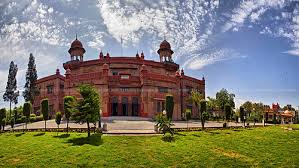
Peshawar is located in a big valley near the eastern part of the historical Khyber Pass, and the Indus Valley. Peshawar is also known as (City on the Frontier). In Persian Peshawar’s strategic location on the intersection of Central Asia and South Asia has made it one of the majority ethnically vibrant and vigorous cities in the greater region. Peshawar is the capital of Khyber-Pukhtunkhwa and the business & administrative center and central economic hub for the Federally Administered Tribal Areas of Pakistan. Peshawar has changed into one of Pakistan’s most ethnically, linguistically, and religiously diverse cities. In the last three decades, there has been a major increase in urban inhabitants, in part due to internal resettlement of the people to seek better employment opportunities, education & services and in part because of the entry of Afghan refugees and other people displaced by military operations and civil unrest in adjacent regions. Peshawar is the major educational, political center of Khyber Pukhtunkhwa.
Lunch in a local restaurant.
PM. Proceed for excursion to Khyber Pass. (Subject to permission).
(To visit Khyber Pass a permission letter is required from the Political agent)
Dinner & overnight at the hotel in Peshawar. (Breakfast, Lunch & Dinner).
Day 04: Peshawar-Takht-e-Bhai-Swat
After breakfast drive to Swat by visiting Takht-e-Bhai.
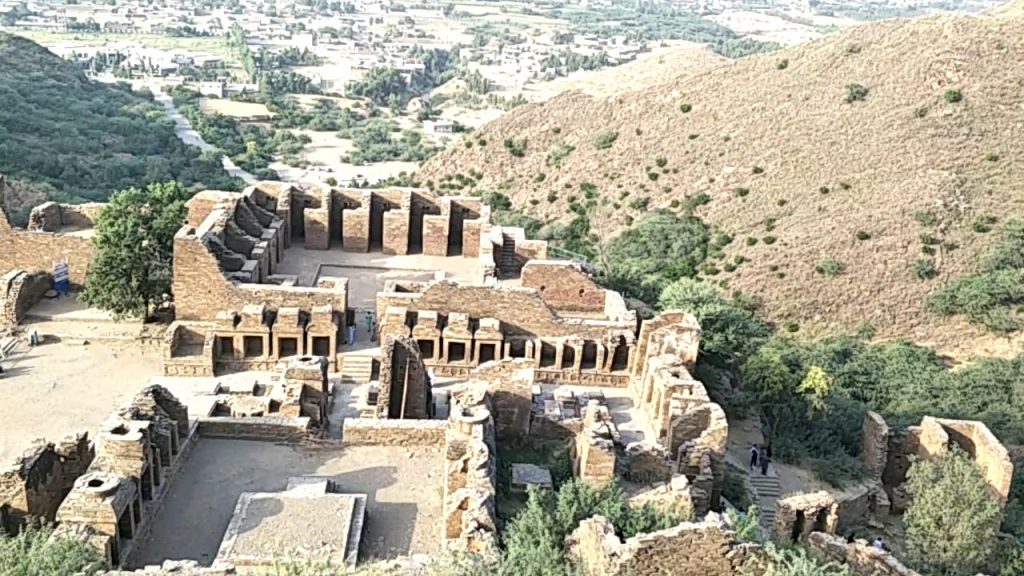
Takht-e-Bhai, a Buddhist site is situated in Northwest of Mardan on the road to Swat. Takht-e-Bhai is the most inspiring and complete Buddhist site in Pakistan. The main construction of the Takht-e-Bhai compound is the monastery and stupas founded in the 1st Century AD & left un-used in the 6th century. Surrounding the monastery on the point on top of it are the remains of private houses, some of them are three storeys high. The name Takht-e-bhai means the hill of springs. There is considerable proof to prove that during the Buddhist period there were lots of springs on the hill here which have now dried up around 200 AD. When Raja Varata was the King of Gandhara, Takht-e-bhai was the capital of the kingdom of that era. The stupas on the site was found to contain square court bounded by a series of cells which accommodates the images. An inscription in Khuroshti characters by the Partian king gandaphernes dated 46 AD was found.
After lunch continue drive to Swat.
Arrive and transfer to the hotel. Evening visit Mingora Bazaar.
Mingora Bazaar is the commercial hub of Swat region and well-worth visiting, there some one will find emeralds for which Swat is well-known. If time permits then continue to Murghazar to visit old white palace constructed from white marble and adorned with ornate carvings.
Dinner & overnight in Swat. (Breakfast, Lunch & Dinner).
Day 05: Swat full day tour
After breakfast morning proceed for full day sightseeing of Swat valley.
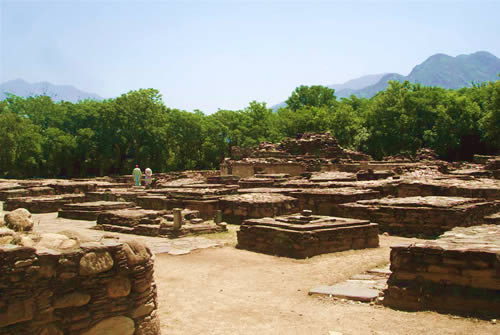
Butkara ruins are one of the most significant Buddhist places of pilgrimage in the valley. Site is consists of a main stupa around which pushed around 215 votive stupas, in it seems that magnificent disarray. The main stupa was supposed to have some ashes of Lord Buddha built by the Mauryan Emperor Ashoka. One can see still there are statues of lions bend down on their side. They may be fell off the ends of the tall columns which once located close to the stupa.
After lunch visit remaining sights Nimogram/Udegram of Swat valley.
Nimogran is exclusive Buddhist site and has three main stupas, one for each of the three principles of Buddhism, the Buddha as teacher, Dharma (The Buddhist doctrine), and Sangha (the Buddhist order). Adjoining the main stupas is 54 votive stupas, and near by unexplored monastery site. Some of the excellent statues found at Nimogram are now in the Swat Museum at Saidu Sharif. While traveling from Chakdara towards Saidu Sharif, one reaches Landakai. About 7 km from here, a road lead towards Nimogram, which is further 21 km away. A Buddhist monastery is located here on the top of a small hill, giving an overall view of the area. There are three main stupas, encircled by a number of small votive stupas. Dressed stones have been used in the building and bear resemblance to Andan Dheri monastery.
Udegram is located 8 kilometers from Saidu Sharif. A city where Alexander fought one of his battles. Italians dug up this site in 1950’s. This site was occupied from 1000 BC to 14th century AD. During the Hindu Shahi era from 8th century to 10th century this was the regional capital of Swat. Remains of Raja Gira’s Fort, the last Hindu ruler were dug up by the Italians in 1950’s. The first mosque built in Swat was discovered in 1985 below the Hindu Shahi Fort in 1985.
Dinner & overnight in Swat. (Breakfast, Lunch & Dinner).
Day 06: Swat City tour-Besham
Breakfast at the hotel. Morning check out from your hotel and proceed to visit Swat Museum.
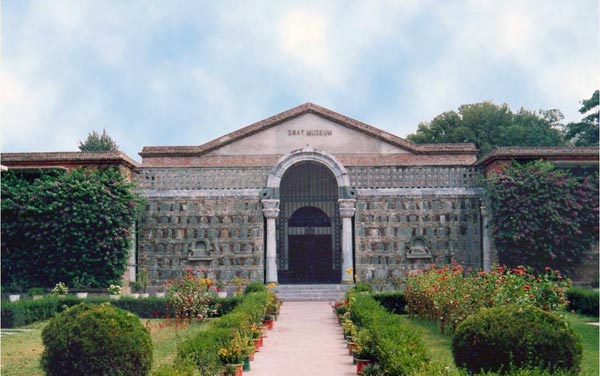
The museum in Saidu Sharif has a huge compilation of Gandhara sculptures collected from some of the Buddhist sites in Swat Valley. There are some local embroidery, carved wood, rare coins & tribal jewelary displayed.
Lunch in a local restaurant. Continue drive to Besham via Shangla Pass.
Arriving at Besham we are at the base perimeter of Indus valley with fascinating view of the Indus River and the legendary road known as the Karakuram Highway (KKH) 8th wonder of the world. The widen of our traveling from Besham to Thakot (Shangla) is just a slight glance of the wonders and inspirational values that this road has in store for its travelers who take their journey with it on upstream path. Arrive and transfer to the hotel.
Dinner & overnight in Besham. (Breakfast, Lunch & Dinner).
Day 07: Besham-Gilgit
After breakfast drive to Gilgit along Karakorum Highway. On the way lunch in a suitable restaurant.
On the way stop at Nanga Parbat view point and 3 mountain ranges junction point.
Gilgit is administratively capital city of Gilgit/Baltistan and business hub in the region. Its ancient name was Sargin, later it is locally known as Gilit. Gilgit was an important city on the Silk Road, along which Buddhism was spread from south Asia to rest of the Asian countries.
Arrive and transfer to the hotel. Dinner & overnight in Gilgit. (Breakfast, Lunch & Dinner).
Day 08: Gilgit-Karimabad via Kargah Buddha
Breakfast at the hotel. Morning excursion to Kargah Buddha.
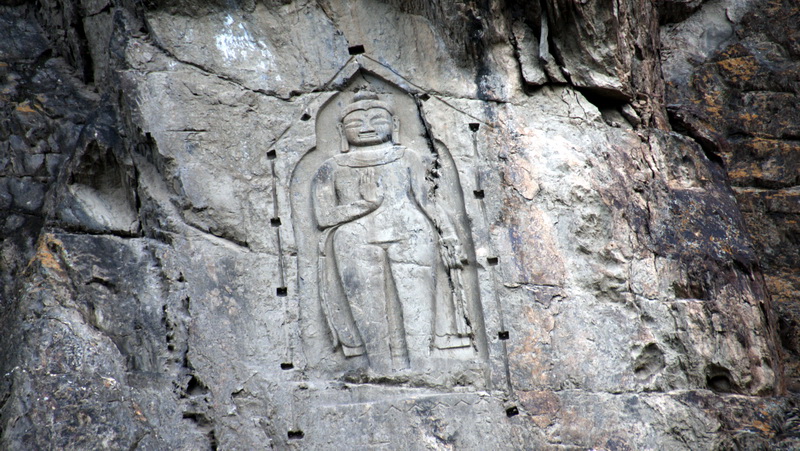
Kargah is an archaeological site located about 9.5 km outside of Gilgit city, Gilgit-Baltistan, Pakistan. It is a carved image of a large standing Buddha in the cliff-face in Karghah Nala. The carving, which is in a style also found in Baltistan, probably dates to the 7th century. Probably this carving was supposed to invent in 1931 and completed in the 7th century and discovered in 1938-39.
After lunch drive to Karimabad Hunza. Arrive and transfer to the hotel.
Karimabad is the delightful old capital of the Hunza Kingdom. From Karimabad, with its souvenir shop, post office and tea shop, you can obtain a superb view of the valley laid out below you and of the peaks at the back. Karimabad area is scattered with natural flowers and blossoming fruit orchards. We will spend half our day in this town enjoying the greenery and enchantment in the sound of waterfall.
Dinner & overnight in Karimabad. (Breakfast, Lunch & Dinner).
Day 09: Karimabad Full day
Early morning proceed to Duiker to view Sunrise by Willy Jeep. Breakfast at the hotel.
Morning visit Altit Fort & Garden.

Duiker is a small village which is 4-5 kms away from Karimabad, situated above Altit Village at a height of (9,327 ft / 2,850 m) approximately, from where one can get gorgeous view of whole Hunza valley and all adjoining peaks as well as Hoper Glacier from this view point.
Altit Fort is an very old fort at Altit town in the Hunza valley in Gilgit Baltistan, Pakistan. It was initially home to the rulers family of the Hunza state who accepted the title Mir, although they moved to the somewhat younger Baltit fort nearby three centuries later. Altit Fort and in particular the Shikari tower is around 1100 years old, which makes it the oldest monument in the Gilgit–Baltistan.
Lunch at the hotel. Afternoon visit Baltit Fort and Bazaar.
Baltit fort (Museum) was the old palace of the Mirs of Hunza and was settled until 1960. It is more then 700 years old. Baltit is a questioning long-winded old place and has four stories, strongly built of stones, sun-dried mud and wood. Baltit is built on a cliff edging at the back side; it is a gorge and then the Ultar glacier shining in the sunshine. The structural design here, as at Altit Fort, reflects a Tibetan influence. The local people says that a Princess of Baltistan get married a time in power Mir and brought with her Balti masons, carpenters and craftsmen to build Baltit and Altit as part of her gift/dowry. In the ‘museum room’ are coats of mail, weapons and the warning drums that sounded the alarm in an attack. The view from the top of the fort is well worth the climb.
Dinner & overnight in Karimabad. (Breakfast, Lunch & Dinner).
Day 10: Karimabad-Sust
Breakfast at the hotel.

Morning drive to Sust, on your way visit Attabad Lake via friendship tunnels.
Lunch in a local restaurant in Gulmit. After lunch visit Gulmit Village.
Gulmit is the head quarter of Tehsil Gojal, in the upper Hunza region of District Hunza/Nagar of Gilgit/Baltistan. Territory is located in the deep in the Karakuram Mountain Range. Gulmit is a centuries-old historic town, with mountains, peaks and glaciers. It is a tourist spot and has many hotels, shops and a museum. Its altitude is (7900 ft / 2408m) above the Arabian Sea level. Gulmit is also a Turkish or Iranian word which means the valley of flowers. Before 1974, when Hunza was a state, Gulmit used to be the Summer Capital of the formerly Hunza state. After the abolition of the state it became the Tehsil’s set up of government. The oldest undamaged house in Gulmit is more than six centuries old.
Continue your traveling to Sust by visiting Hussaini Suspension bridge Known as the most dangerous bridge in the world, the Hussaini Hanging Bridge is only one of many precarious rope bridges in Gilgit-Baltistan Pakistan.
Arrival in Sust and transfer to your hotel in Sust Village.
It is the last town within Pakistan on the Karakoram Highway before the Chinese border. It is elevated 2800 meters above sea level. The town is an important place on the highway for all passenger and cargo transport because all traffic crossing the Pakistan-China border passes through this town, Pakistani immigration and customs department offices are based here. Pakistan and China have opened border for trade and tourism at Khunjerab. The Main languages spoken here is Wakhi and Brushaski. The Silk Route Dry Port started its business operations at the port Sost (Upper Hunza) near Khunjarab pass Gilgit-Baltistan.
Dinner & overnight at the hotel. (Breakfast, Lunch & Dinner).
Day 11: Sust-Khunjerab Pass-Tashkurgan (China)
Breakfast at the hotel. Check out from your hotel and transfer to Customs office for immigration formalities to enter in China via Khunjerab Pass.
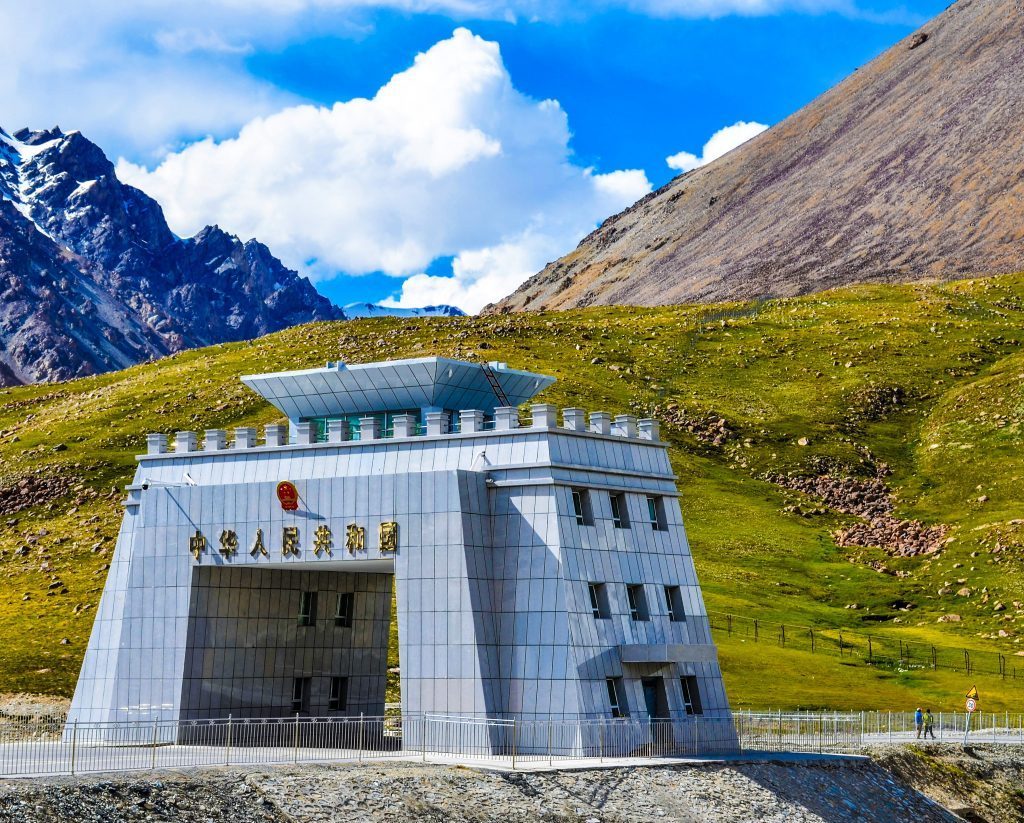
Khunjerab Pass (at an elevation of 15397 ft / 4693 m) is a high mountain pass in the Karakuram Mountains in a strategic position on the northern border of Pakistan’s Gilgit-Baltistan region on the southwest border of the Xinjiang province of China. The Khunjerab Pass is the highest cemented international border crossing in the world and the highest point on the Karakuram Highway. The road across the pass was completed in 1982, and has old-fashioned the unpaved Mintaka and Kilik Passes as the primary passage across the Karakorum Range.
On the Pakistani side, the pass is 42 kms from the National Park station and checkpoint in Dih, 75 km from the customs and immigration post in Sost, 270 km from Gilgit, and 870 km from Islamabad. On the Chinese side, the pass is 130 kms from Tashkurgan, 420 kms from Kashgar and some 1890 kms from Urumqi city. The Chinese port of entry is located 3.5 km along the road from the pass in Tashkurgan region.
After formalities transfer to Government transportation for your further traveling with pack lunch.
(Breakfast, Lunch).
SERVICES END
